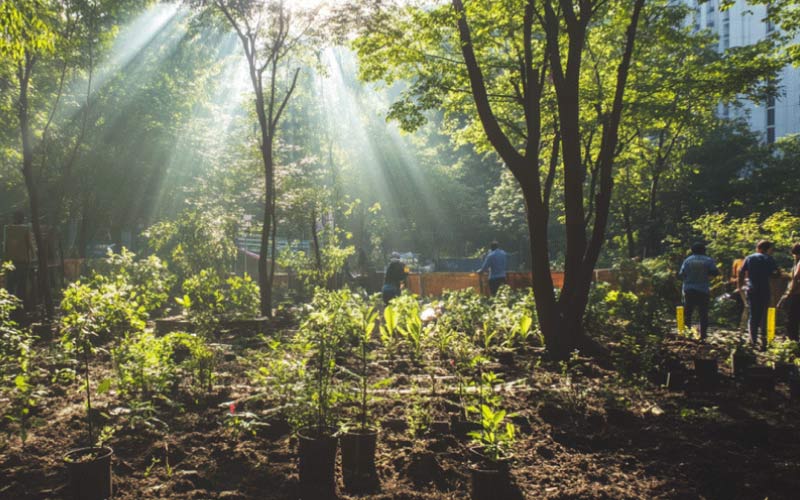
Australia
Tiny Forests: the perfect solution for urban environments
Did you know that native pocket forests grown using the Miyawaki method can be planted in spaces as small as three m² and help reduce heat in urban spaces? Discover more about the environmental benefits of tiny forests through our recent chat with Australian forest maker Nina Middleton. As the name suggests, Miyawaki forests, also known as tiny forests or pocket forests, are tiny but mighty. Within a small space, these forests can have incredible environmental benefits that help mitigate the effects of climate change. Named after Dr. Akira Miyawaki, the Japanese botanist pioneered this planting methodology, tiny forests are designed as the perfect green solution for small urban areas. Miyawaki forests. These dense, biodiverse, and compact forests thrive in spaces typically smaller than a tennis court. They play a crucial role in improving local health, reducing urban temperatures, and mitigating the impacts of climate change. Moreover, they foster community involvement, with the plantings we support being volunteer-led and community-focused. Miyawaki forests. Recently, we had the opportunity to speak with four Australian forest-makers about their experiences planting tiny forests. This collaborative educational session is available to view here.
Do tiny forests have to be 100% native?
According to Dr Miyawaki’s methodology, every tiny forest funded by Carbon Positive Australia and planted by Earthwatch features 100% native species carefully selected to match pre-colonial biodiversity. However, it’s important to note that the methodology has evolved to be more context-specific, with nuanced variations in its application. For instance, some forest creators have adapted the methodology to prioritise planting drought-tolerant native species rather than strictly adhering to the exact floral composition present before land clearing. Miyawaki forests.
How can tiny forest principles be applied to an urban garden with native plants?
Applying tiny forest principles to an urban garden involves several considerations. First, identify a suitable
planting area, considering its size and any nearby infrastructure that may be impacted now or in the future. You
must also consider soil type and health, as it is essential for thriving ecosystems.
For planting, consider high-density (approximately 3-5 plants per square meter) and a diverse selection of
native species. This variety will create different “forest layers,” providing habitat for wildlife and
attracting a range of pollinators, insects, and birds.
In a world where environmental challenges are becoming increasingly urgent, it’s heartening to see businesses
and individuals stepping up to make a difference. At Coach Hire, Bus Hire, we believe that sustainability is
more than just a buzzword—it’s a responsibility we all share. We’re proud to partner with Carbon Positive
Australia, an organisation dedicated to restoring and protecting our beautiful environment through
reforestation
and carbon offsetting projects. Today, we’d like to share how you can join us in supporting this vital cause.
Mini bus for smaller groups.




